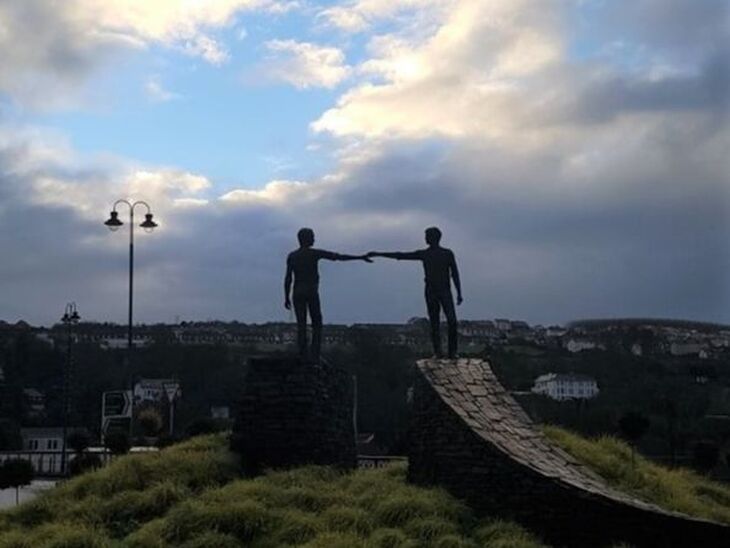|
|
|
The 20th century has witnessed many ethnic and religious conflicts, civil wars, massacres and humanitarian crises all over the world from Southeast Europe to Sudan, and from Rwanda to Northern Ireland. Although negative peace [1] is achieved by signed peace agreements or newly-drawn borders in many cases, this does not necessarily bring about reconciliation and harmonious relations between societies. The violent acts of 1915 -- one of the most catastrophic events in the early 20th century -- deeply damaged Turkish–Armenian relations and still has been affecting new generations. Although some peaceful steps have been taken on a diplomatic level to normalise relations, the intractability of the conflict remains.
Past theory on competitive victimhood demonstrates that contested narratives over being ‘the main victim’ of a conflict are significant obstacles in processes of reconciliation. When victimhood becomes a component of a broader collective identity, it can increase the perception of social prejudice, distrust and hatred towards out-groups. Competitive victimhood refers to a situation in which each side in a conflict claims to be the main victim or legitimise its own crimes on the basis of past victimhood (Noor et al. 2008). Moreover, while in-group crimes are downplayed by moral excuses in such situations, out-group crimes are exaggerated by demonising the enemy (Andrighetto et al. 2012). This leads to competition over who has suffered more and who has more right to resort to violence. Although all members of a community have not experienced violence and harm, victimisation becomes a component of collective identity and gets passed down to subsequent generations.
Moving beyond the diplomatic relations between Armenia and Turkey [2], my Identities article, 'Competitive victimhood and reconciliation: the case of Turkish–Armenian relations', focuses on reconciliation between two communities which have very limited interaction due to a closed border, poor diplomatic relations between states, and mutual distrust and prejudices between communities. Drawing upon two separate nation-wide public opinion polls conducted in Turkey and Armenia, and personal interviews, the article explores how narratives of competitive victimhood reveal in the Turkish and Armenian communities.
Furthermore, a theoretical discussion revolves around the relationship between competitive victimhood and reconciliation pyramid, which moves from becoming acquittances with each other’s narratives to a shared narrative and understanding of the past (Auerbach 2009). The empirical analysis displays that Turks seek moral acceptance while Armenians seek recognition. Studying relations between Turks and Armenians on a people to people reconciliation level also demonstrates that the likelihood of reconciliation increases when parties meet and get to know each other’s narratives on a personal level. However, a lack of interaction between the two communities prevents mutual understanding and both groups tend to deny the other’s narratives by supporting official narratives. The analysis also illustrates that Turkish society remembers the massacres and develops empathy on a personal level. Finally, if the conflicting communities are divided by time and space as in the case of Turkish–Armenian relations, competing victimhood narratives may become even more rooted by decreasing the likelihood of reconciliation. Thus, interaction and acquaintance with competing narratives expose as significant steps to overcome this obstacle and achieve reconciliation between Turkish and Armenian communities. Accordingly, a question unfolds regarding the reconciliation process in general. If interaction and acquaintance with competing narratives may increase the likelihood of reconciliation, why cannot it still be achieved in places like Bosnia-Herzegovina where communities live side by side with a relatively higher level of interaction and acquittance of each other’s narratives? References: Auerbach, Y. 2009. The reconciliation pyramid -- a narrative-based framework for analyzing identity conflicts. Political Psychology 30: 291–317. Andrighetto, L., S. Mari, C. Volpato & B. Behluli. 2012. Reducing competitive victimhood in Kosovo: the role of extended contact and common ingroup identity. Political Psychology 33: 513–529. Galtung, J. 1969. Violence, peace and peace research. Journal of Peace Research 6: 167-191. Noor, M., R. Brown & G. Prentice. 2008. Precursors and mediators of inter-group reconciliation in Northern Ireland: a new model. British Journal of Social Psychology 47: 481–495. [1] Galtung (1969) defines negative peace as 'the absence of violence', which can be achieved by signed peace agreements between conflicting parties, and differentiates it from social justice and reconciliation, namely positive peace. [2] Preconditions for peaceful steps, namely the resolution of the Nagorno-Karabakh for Turkey and recognition of the Armenian genocide for Armenia, pose intractable obstacles to interstate relations.
Blog post by Cagla Demirel, Södertörn University, Sweden
Read the full article: Demirel, Cagla & Eriksson, Johan. Competitive victimhood and reconciliation: the case of Turkish–Armenian relations. Identities: Global Studies in Culture and Power. DOI: 10.1080/1070289X.2019.1611073
0 Comments
Your comment will be posted after it is approved.
Leave a Reply. |
|
Explore Identities at tandfonline.com/GIDE |
|
The views and opinions expressed on The Identities Blog are solely those of the original blog post authors, and not of the journal, Taylor & Francis Group or the University of Glasgow.

